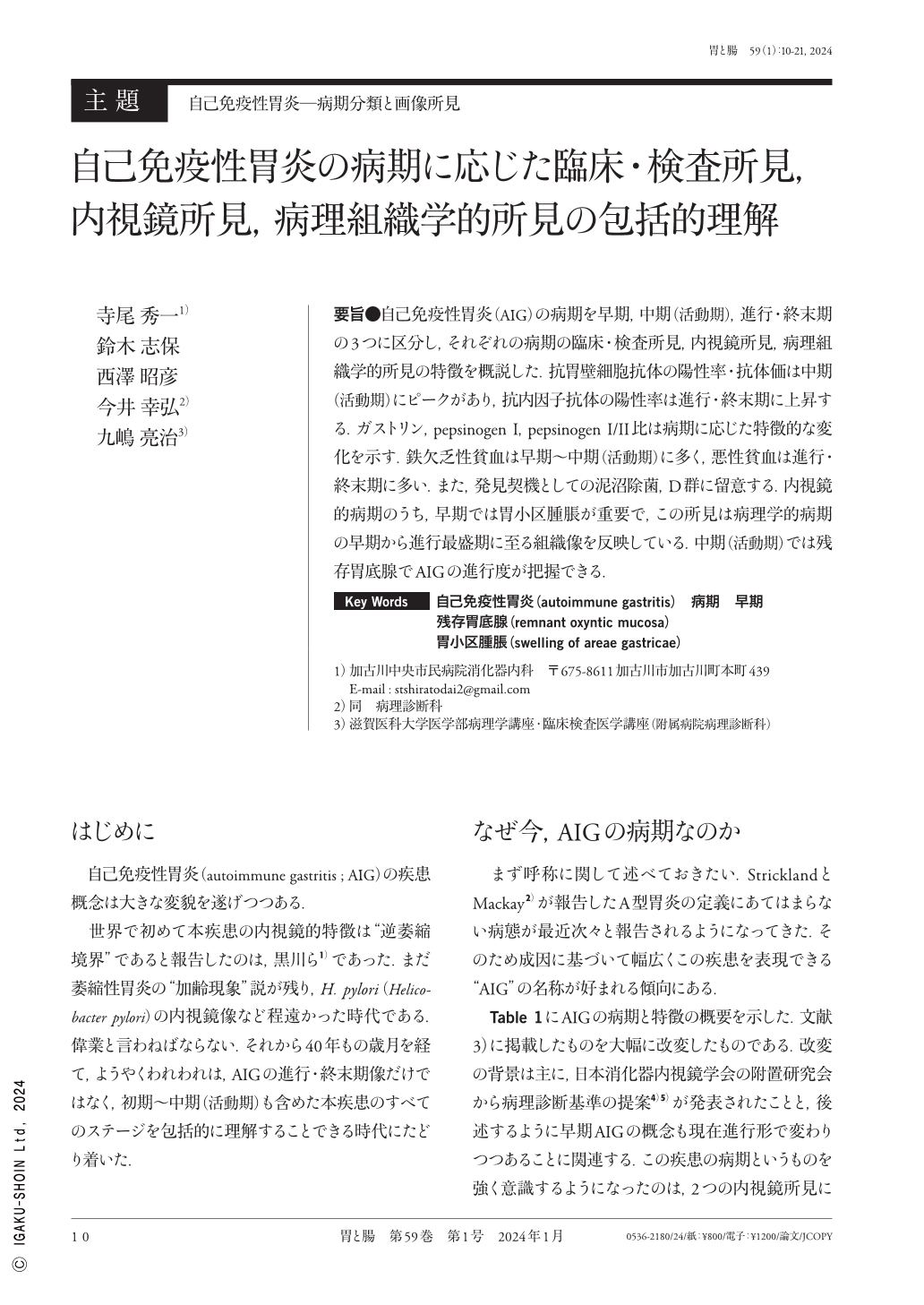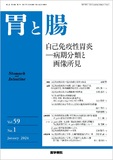Japanese
English
- 有料閲覧
- Abstract 文献概要
- 1ページ目 Look Inside
- 参考文献 Reference
- サイト内被引用 Cited by
要旨●自己免疫性胃炎(AIG)の病期を早期,中期(活動期),進行・終末期の3つに区分し,それぞれの病期の臨床・検査所見,内視鏡所見,病理組織学的所見の特徴を概説した.抗胃壁細胞抗体の陽性率・抗体価は中期(活動期)にピークがあり,抗内因子抗体の陽性率は進行・終末期に上昇する.ガストリン,pepsinogen I,pepsinogen I/II比は病期に応じた特徴的な変化を示す.鉄欠乏性貧血は早期〜中期(活動期)に多く,悪性貧血は進行・終末期に多い.また,発見契機としての泥沼除菌,D群に留意する.内視鏡的病期のうち,早期では胃小区腫脹が重要で,この所見は病理学的病期の早期から進行最盛期に至る組織像を反映している.中期(活動期)では残存胃底腺でAIGの進行度が把握できる.
The three stages of AIG(autoimmune gastritis), namely early, middle(active stage), and advanced or end-stage, along with the clinical, laboratory, endoscopic, and pathological findings in each stage have been described in this manuscript. The positivity rate and antibody titer of parietal cell antibodies peak in the middle stage, in contrast, the positivity rate of anti-intrinsic antibodies increases in the advanced or end stages.
Serum gastrin, PG(pepsinogen)I, and PG I/II ratio exhibited characteristic changes in accordance with the stage of the disease. Iron deficiency anemia tends to be more common in the early to active stages, while pernicious anemia gradually increases toward the advanced and end stage. Note the presence of AIG among the D group in ABC gastric cancer screening test and among refractory to repeated Helicobacter pylori eradication therapy. In endoscopic staging, the main endoscopic finding in the early stage is the swelling of areae gastricae, which reflects early to advanced florid stages of pathohistological staging. In the middle(active)stage, the remnant oxyntic mucosa provides endoscopic assessment of progression of AIG.

Copyright © 2024, Igaku-Shoin Ltd. All rights reserved.


